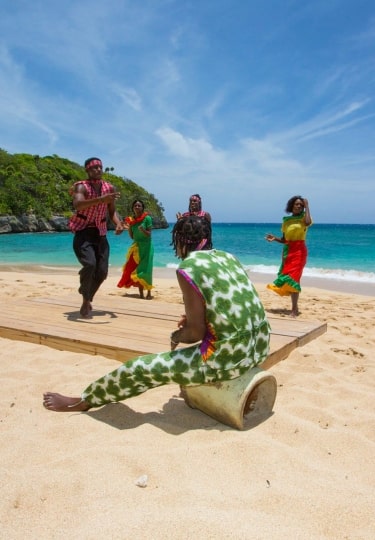The Caribbean is one region, and in many ways, one united community, but with myriad vibrant, individual cultures. Each island has its own historical influences, resulting in different traditions, cuisine, cocktails, festivals, and music.
Languages vary from English to Spanish, French, and Creole, the latter influenced by French, Spanish, or Dutch, with Hindi and African expressions thrown in. Travel the region and you’ll be seduced by the rhythms of everything from reggae to soca and calypso.
The islands do share a number of common cultural traits. The legacy of slavery and emancipation has shaped everything from music and storytelling to architecture. Family values influence the rituals of day-to-day life; sitting down to eat together, attending church, and often, living as a multigenerational household. A sense of hospitality, tourism being such an important source of income. And the laid-back lifestyle that comes hand-in-hand with glorious tropical settings, sandy beaches, and swaying palms.
Here are 10 aspects of authentic Caribbean culture to enjoy on your next visit.
Rum, Wherever You Go
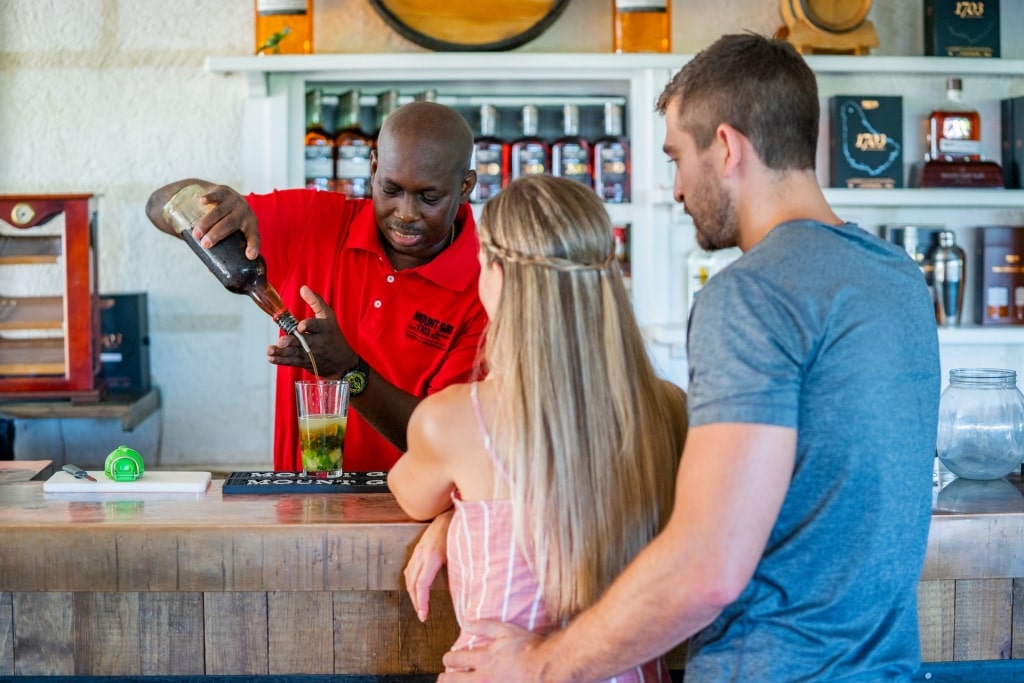
Mount Gay Distillery, Barbados
If all the islands of the Caribbean have one common cultural trait, it’s producing and drinking rum. Developed in the 17th century as a by-product of the sugar cane which was grown all over the region, rum is synonymous with the Caribbean.
The more you study (and taste) it, the more you realize that each island has developed its own style, from the strong, dark rums made from molasses and associated with the English-speaking islands, to the lighter versions made by the Francophone islands. Either way, many would agree that there’s nothing better than a Planter’s Punch, tangy mojito, or other refreshing Caribbean cocktail on some gorgeous beach at sunset.
Learning more about Caribbean rum is encouraged wherever you go, from the famed Mount Gay distillery in Barbados to San Juan, Puerto Rico, home of the Bacardi empire.
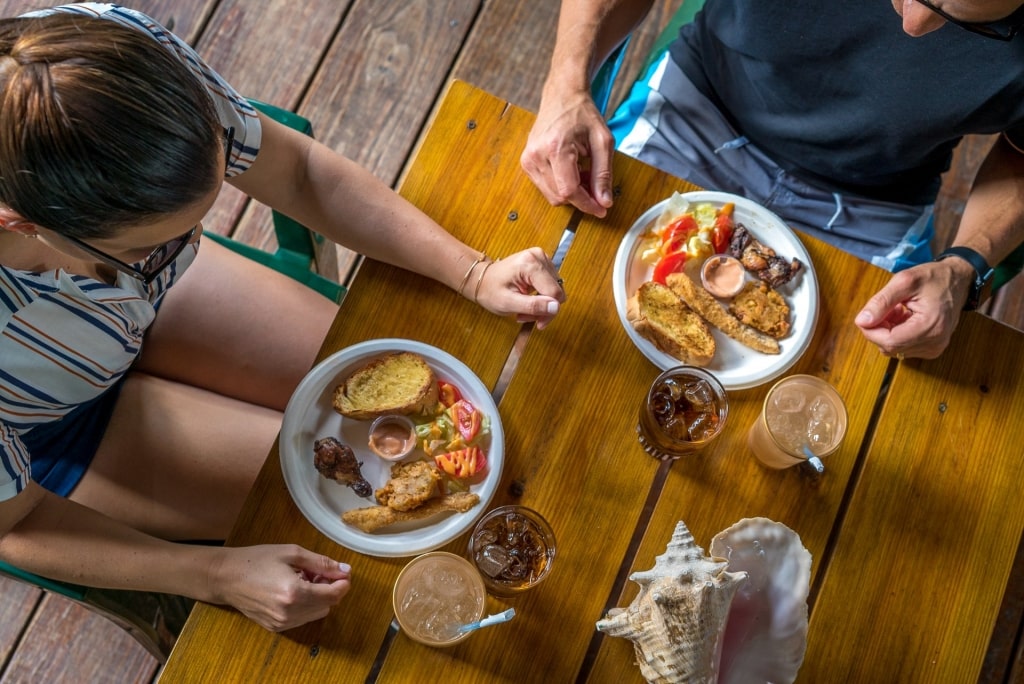
Backyard Rum Shack, Antigua
In Antigua, you can have a more intimate introduction than you’d get at some of the big distilleries at Backyard Rum Shack. This family-run distillery offers tasting sessions accompanied by tales about the history of rum production. You’ll try rum-paired snacks, too, such as conch fritters, jerk chicken, and crab cakes.
Year-Round Festivals
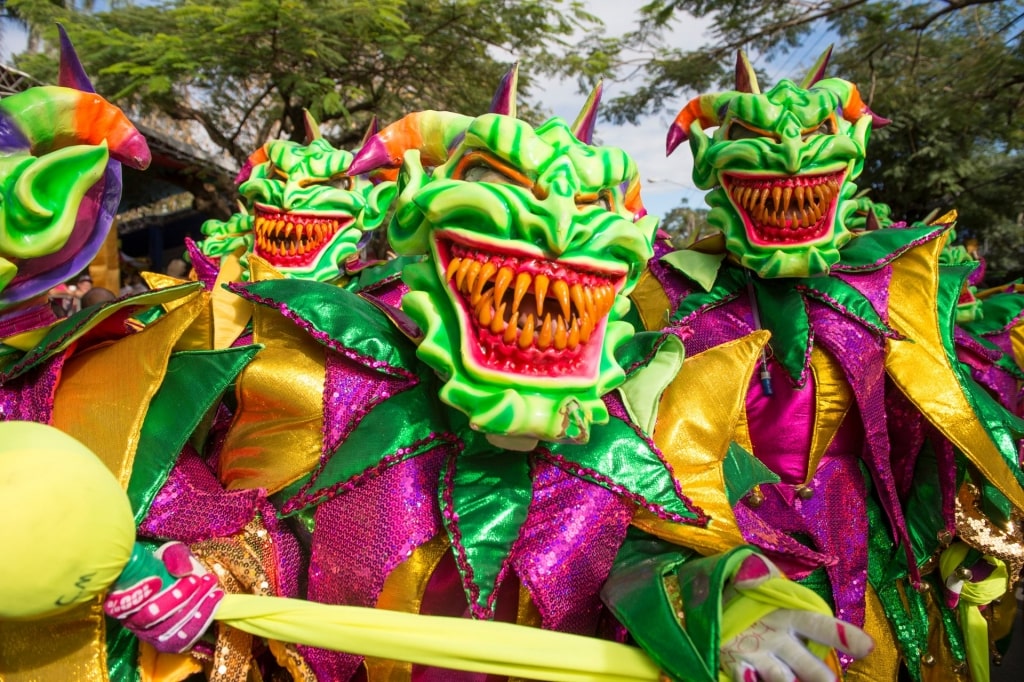
Carnival, Dominican Republic
The people of the Caribbean know how to throw a good festival, pouring all their creativity into lavish costumes, marching bands, dazzling floats, and dance. Trinidad holds the world’s second-biggest pre-Lenten Carnival after Rio, rivaling the original in its exuberance.
But other islands have their own festivals, just as flamboyant. The Dominican Republic has its own Carnival in February, a month of dancing, street parties, and processions. Visit Barbados in summer during Crop Over for street food, dancing, art exhibitions, live bands, and general Carnival-inspired celebration.
In the Bahamas, the glittering costumes, colorful masks, drumming, and parades of Junkanoo take place on December 26 and New Year’s Day.
An Obsession With Cricket
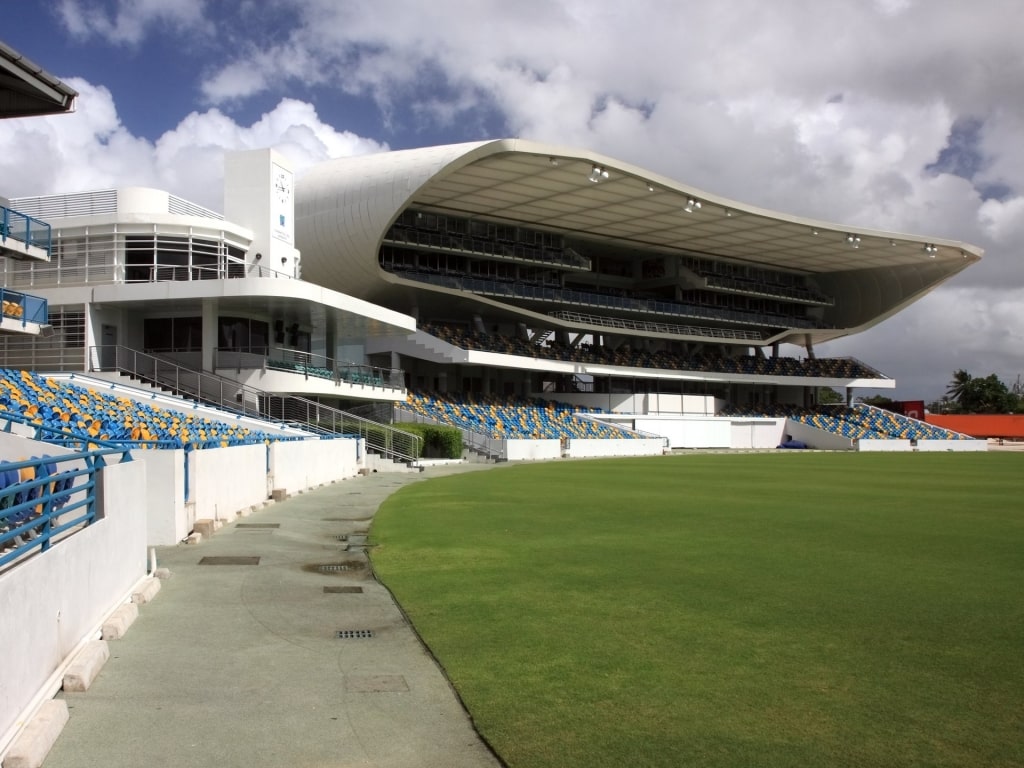
The Kensington Oval in Bridgetown, Barbados
Cricket is a way of life for many in the Caribbean. Introduced by the British at the beginning of the 19th century, it was seen as a way of bonding the various English-speaking communities of the region.
Today, the West Indies cricket team is a formidable force in the world of cricket, with legendary players such as Sir Garfield Sobers and Brian Lara attaining hero status. If you know anything about cricket, you’ll quickly make friends.
You’ll see cricket everywhere, from Barbados to Antigua, Jamaica, Trinidad, St. Kitts, and the British Virgin Islands. It’s played anywhere from carefully groomed pitches like The Kensington Oval in Bridgetown, Barbados to beaches, where barefoot kids hone their batting and bowling skills and visitors are always welcome to join in.
Jerk, Conch, and Roti
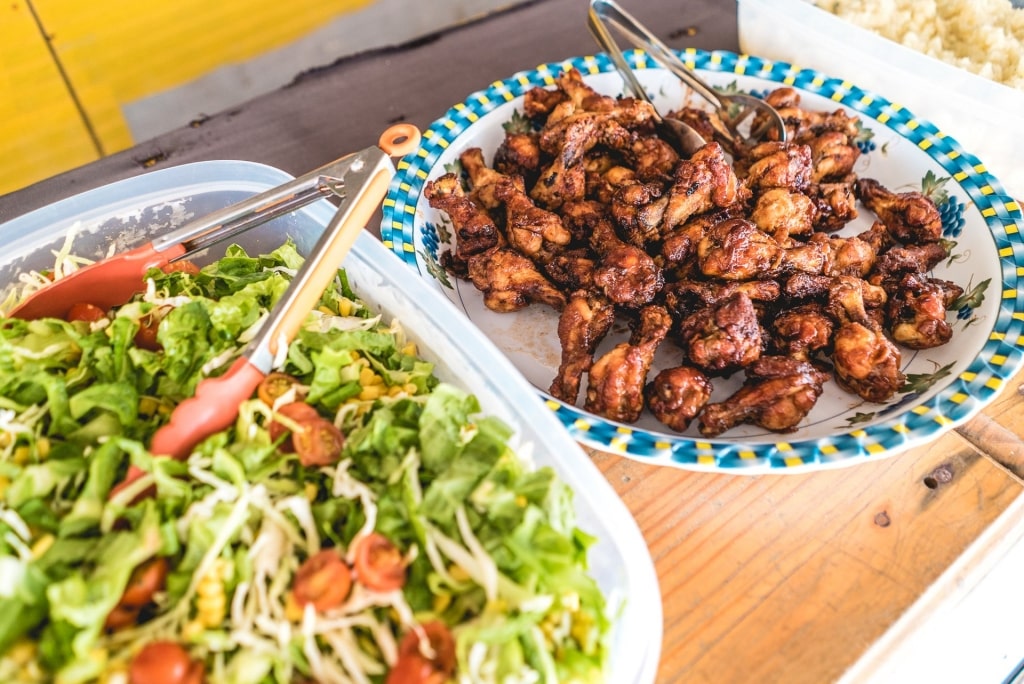
Jerk chicken
Each island has its own culinary traditions, but some dishes are so popular they’ve spread all over the Caribbean region.
Jerk chicken or pork, for example, originated in Jamaica, but you’ll find it everywhere. The meat is either marinaded or rubbed with a fiery mix of chillies and spices, and then cooked over an open flame.
You can buy jerk mixes everywhere as a souvenir to take home, although each family would claim to have their own superior recipe. If you’re a real aficionado, check out Walkerswood Jerk in Falmouth, Jamaica, where you can taste different mixes and sample a range of jerked meats.
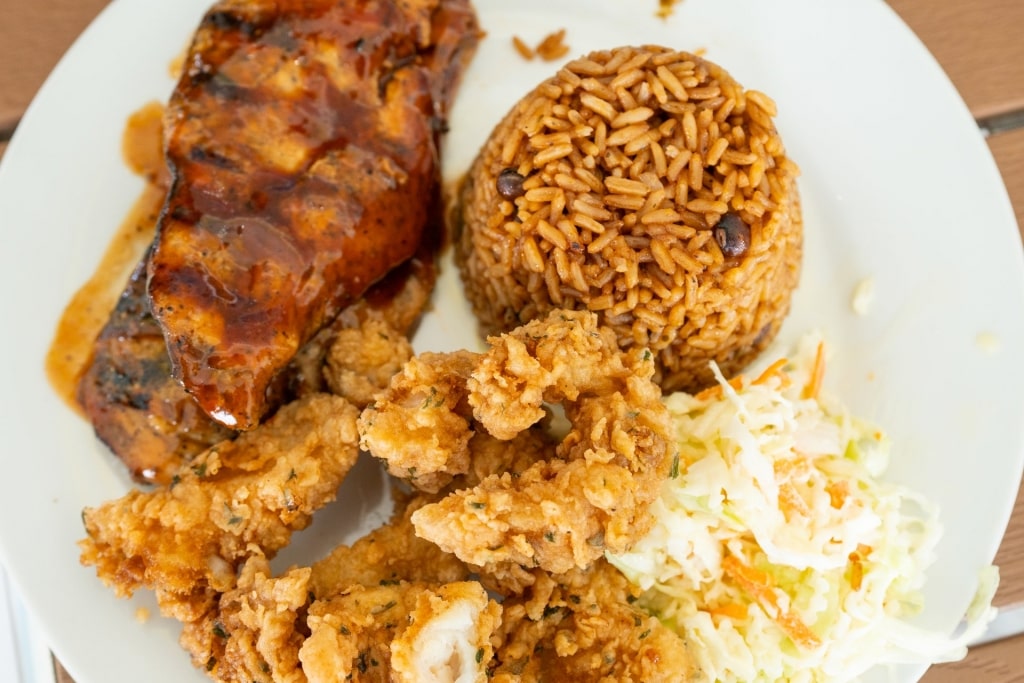
Rice ‘n’ peas
Rice ‘n’ peas is another Caribbean staple, although it doesn’t contain peas but kidney beans. The rice is cooked in coconut broth and the whole ensemble served with spicy seasoning as a side to jerked meat.
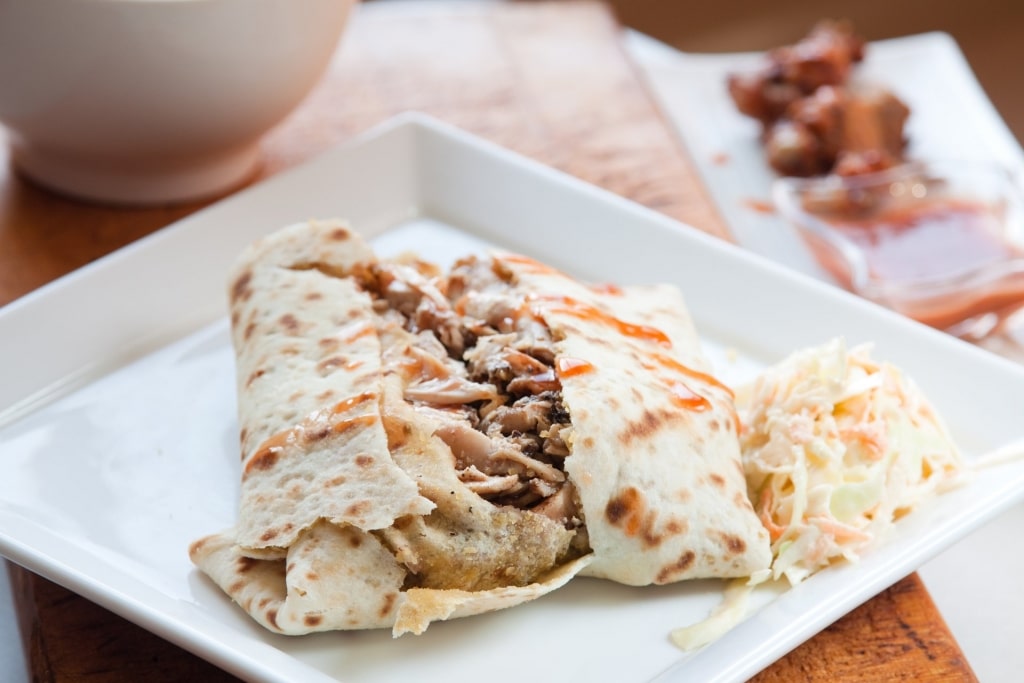
Roti
Roti is another regional favorite. Although it originated in India, roti has evolved to incorporate Caribbean flavors. It’s like a light pancake, less stodgy than a tortilla, stuffed with spicy chicken curry.
Seafood, not surprisingly, is a huge part of Caribbean cuisine. If your travels take you to the Bahamas, you’ll find conch everywhere: in fritters, delicious creamy chowder, and salads, in chic restaurants and on street food stalls.
Read: What to Eat in The Bahamas
Colonial-Era Architecture
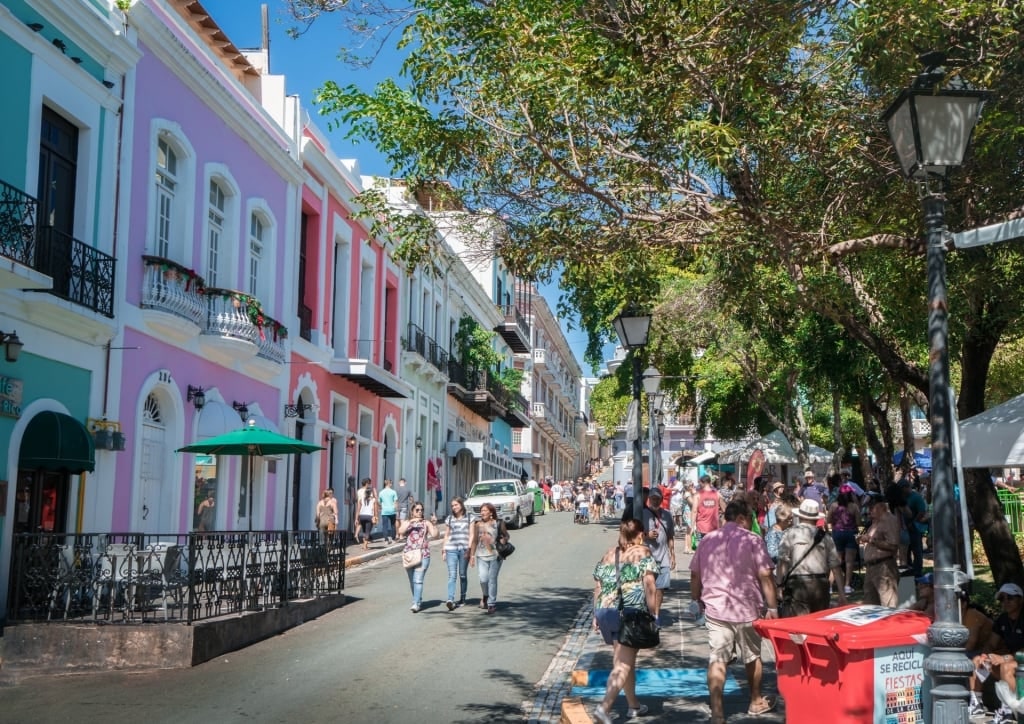
Old San Juan, Puerto Rico
While the idea of colonialism in the Caribbean may have uncomfortable connotations for some, what the early French, Spanish, Dutch, Danish and British settlers did leave behind was some magnificent architecture.
Old San Juan in Puerto Rico, for example, is a joy to explore, dating back 500 years and guarded by two chunky forts, Castillo San Felipe del Morro and Castillo de San Cristóbal. Narrow, cobbled alleys lined with houses in popping shades of scarlet, turquoise, and orange criss cross the islet that forms the old part of the city, crammed with cool, arty boutiques and cafés.
Read: Things to Do in Puerto Rico With Kids
In Nassau, admire the gracious, flamingo-pink buildings around Parliament Square, dating back to 1815. Barbados’ Parliament building, meanwhile, is an imposing, neo-Gothic structure dating back to the late 19th century.
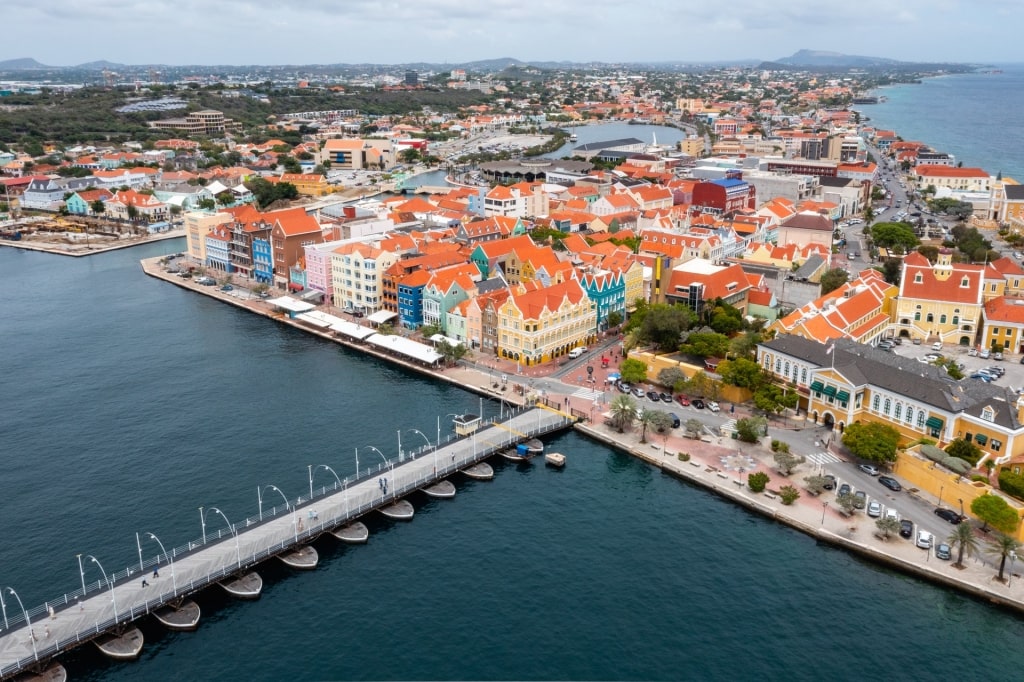
Willemstad, Curacao
No trip to Curaçao is complete without gazing at the beautiful gabled houses along the waterfront of Willemstad, the legacy of Dutch rule. Here, Dutch architectural style meets the vibrant colors of the Caribbean, the shuttered houses in dazzling shades of ruby red and lime green.
In St. Lucia, meanwhile, admirers of architecture should head for Pigeon Island National Park, in the north. Here, you’ll wander among the crumbling remains of military buildings and cannons that were used during battles between Britain and France in the 1770s. Pigeon Island is a peaceful place nowadays, lush with palms and tropical blooms, with magnificent views over the coast.
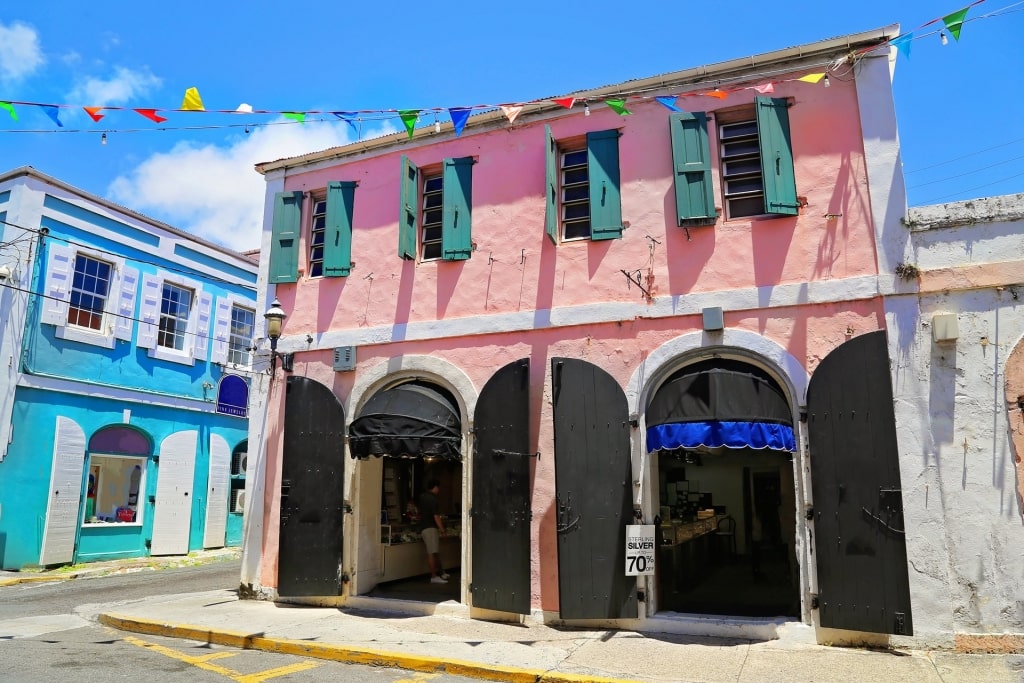
Charlotte Amalie, St. Thomas
Charlotte Amalie, on St. Thomas, is an early example of Danish colonial architecture; the town was established in 1672 and is actually named after Charlotte Amalia, the then Danish Queen. You can wander around the Historic District, which spans various historical events.
Emancipation Garden commemorates the emancipation of slaves on the island in 1848, while Fort Christian was built by the Danes in 1672 and later served as a prison. Blackbeard’s Castle is a five-story watchtower, also built by the Danes, to look out for unwelcome ships approaching the harbor.
Sunshine Soundtracks
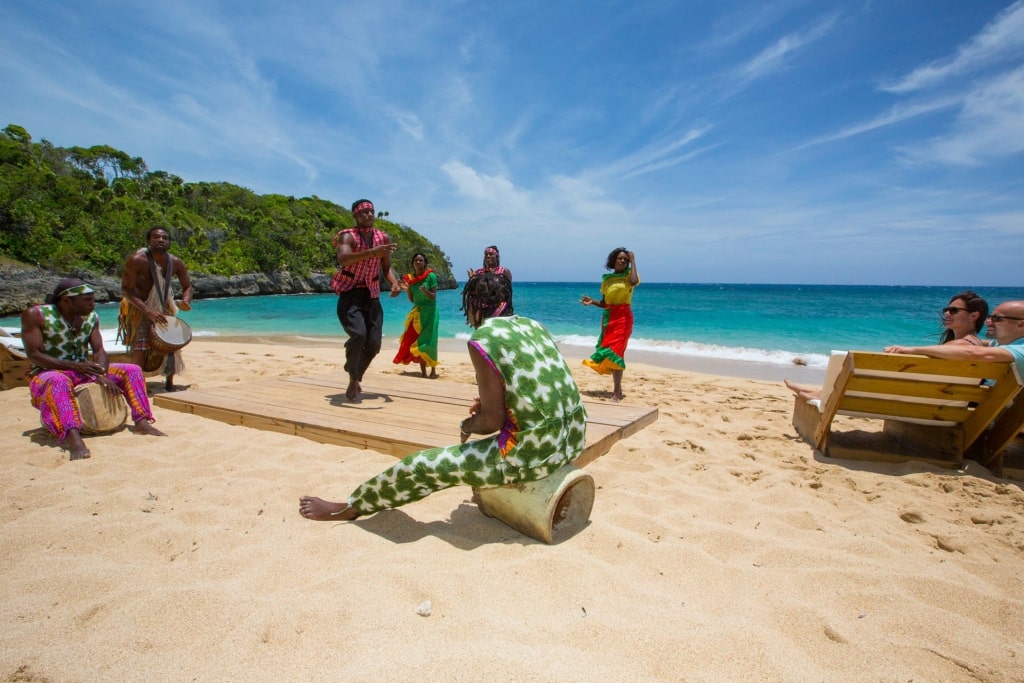
Jamaica
You’ll hear music everywhere you go in the Caribbean, setting the tone of the tropics. While many of the lyrics of reggae, ska, dancehall, and calypso are serious and political, referencing slavery, emancipation, and more current political events, the rhythms are without doubt uplifting and toe-tapping. It’s the kind of music that makes you long for a rum punch on a tropical beach.
Look out for steel bands, too; “pan” music, as it’s called locally, is so culturally important that it’s even taught in schools. The biggest bands may have up to 100 performers.
In Jamaica, you’ll hear reggae everywhere, put on the global map by the great Bob Marley. Trinidad and Tobago is the home of calypso. In Puerto Rico, you can make your own music in Loiza, regarded as the island’s cultural capital.
Read: Things to Do in Tobago
Workshops show you how to make a combination of the guiro and the maraca, both popular percussion instruments, followed by a dance class and a chance to learn about the African origins of Bomba, the musical style that epitomizes Puerto Rican culture.
Limin’
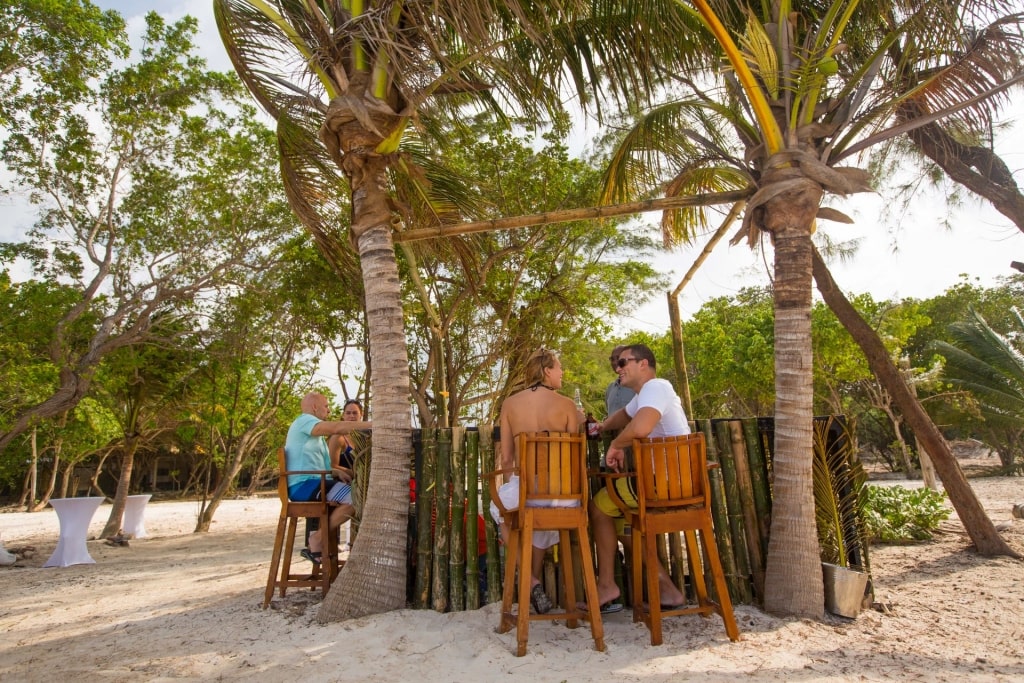
Jamaica
Anybody who wants to immerse themselves in Caribbean culture should embrace the concept of limin’, which is ubiquitous in the region. What does it mean? Limin’ means hanging out with friends, doing very little, perhaps eating, drinking and chatting.
Limin’ can take place in a rum shack, or a restaurant, a beach, on someone’s porch, or anywhere pleasurable. It’s not to be confused with being lazy; while there’s little actual activity involved, limin’ is a real custom and an important part of the social fabric.
Read: Best Caribbean Island for First Timers
Going to Church
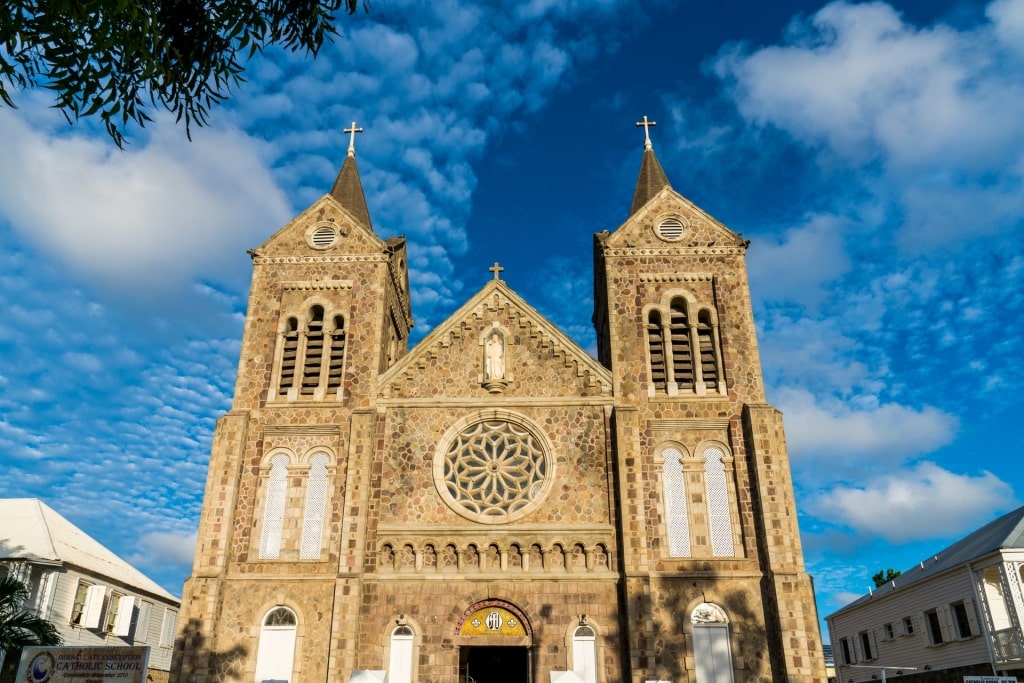
Immaculate Conception Co-Cathedral, St. Kitts
While the Caribbean region offers great religious diversity, from Islam to Hindi, Rastafarianism and ancient African traditions like Voodoo, Christianity is the dominant faith.
On a Sunday, you’ll see locals dressed in their finery to go to church: ladies in fancy frocks and colorful hats, men in sharp suits, and kids formal in their Sunday best. Stand outside a church and just let the singing waft over you.
One legacy of colonialism is some magnificent places of worship, with churches dotted across the region that often seem disproportionately large for the small towns and villages they serve.
In St. Kitts, visit the Immaculate Conception Co-Cathedral in Basseterre. Although it’s less than a century old, this is an impressive structure of rather austere gray stone, with a barrel-vaulted ceiling inside built to resemble the hull of a ship and beautiful stained-glass windows.
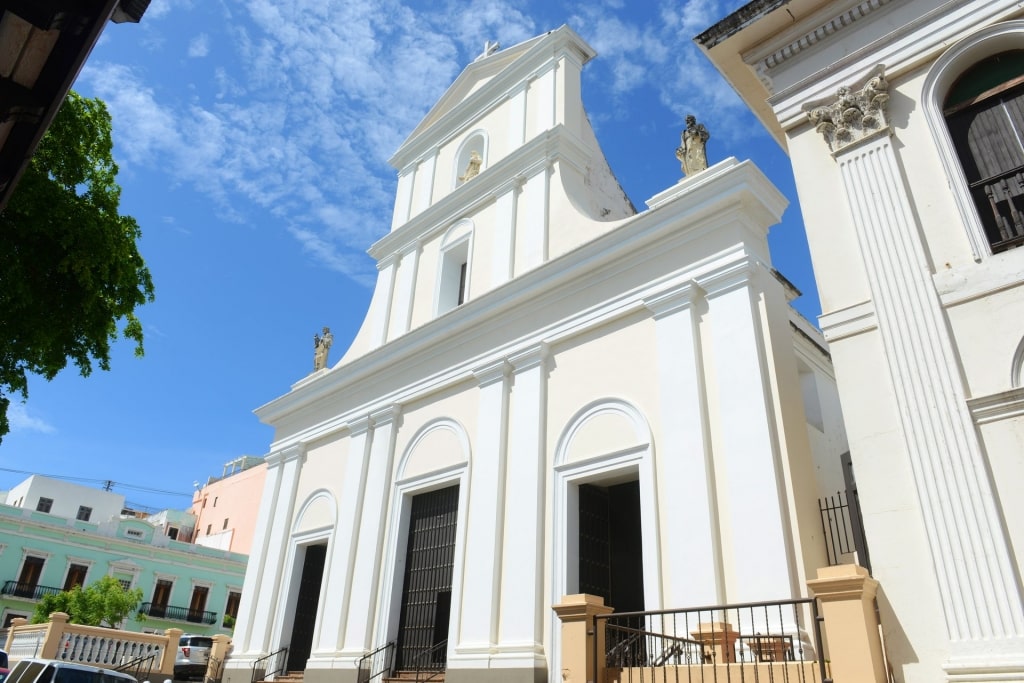
Basilica of San Juan Bautista in San Juan, Puerto Rico
Or pay a call to the Basilica of San Juan Bautista in San Juan, Puerto Rico. Built in 1540, it’s officially the oldest church in the United States. You’ll see the tomb of Juan Ponce de Léon, the first European explorer to arrive in Florida, which he named in 1513.
Conserving Nature
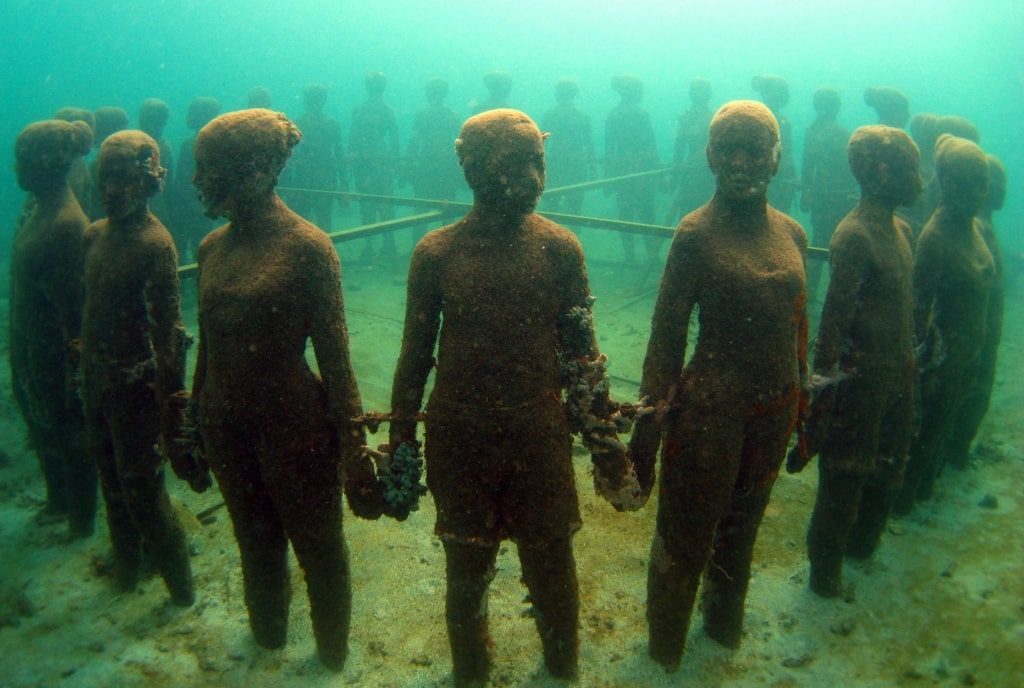
Underwater Sculpture Park, Grenada
It’s easy enough to picture the Caribbean as a place of white-sand beaches and swaying palms, which is certainly accurate. But throughout the region, there’s incredible natural diversity and locals go to great lengths to conserve the beauty of their islands.
Part of this conservation effort is to come up with creative ways visitors can immerse themselves in nature. On Grenada, snorkel over the astonishing Underwater Sculpture Park. Here, underwater sculptures representing local characters, real and fictitious, as well as the petroglyphs resembling those left by the original Amerindians, are dotted across the sea bed, schools of fish in brilliant colors flitting between the artworks.
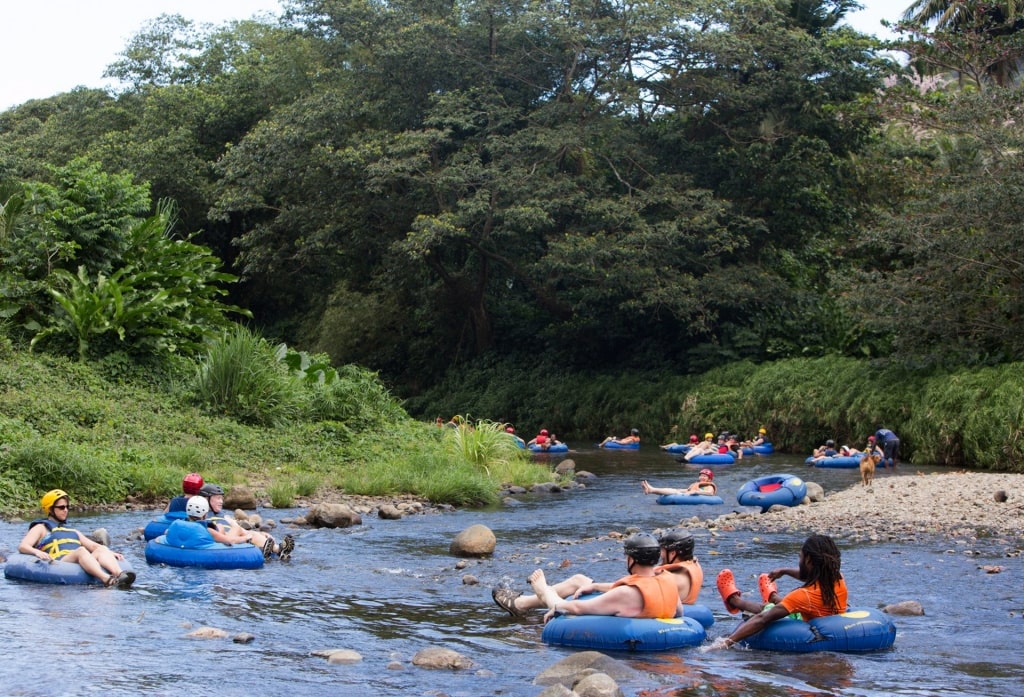
Dominica
On wild, mountainous Dominica, cool off with a river tubing adventure, lying back in a big tube and letting the river carry you under tunnels of green trees, over gentle rapids and into green rock pools. Using only the current as propulsion, tubing is a zero-impact activity.
The river crosses Kalinago territory, the home of the last remaining Carib Indian tribe, whose history dates back more than 5,000 years. You’ll have a chance to learn about their ancient culture during this adventure.
As one of the best Caribbean islands for adventure, keen hikers will feel the pull of the Pitons, St. Lucia’s twin volcanic peaks. You’ll be pleased to know that it’s possible to hike to the top of Gros Piton, a rewarding four-hour trek with stupendous views.
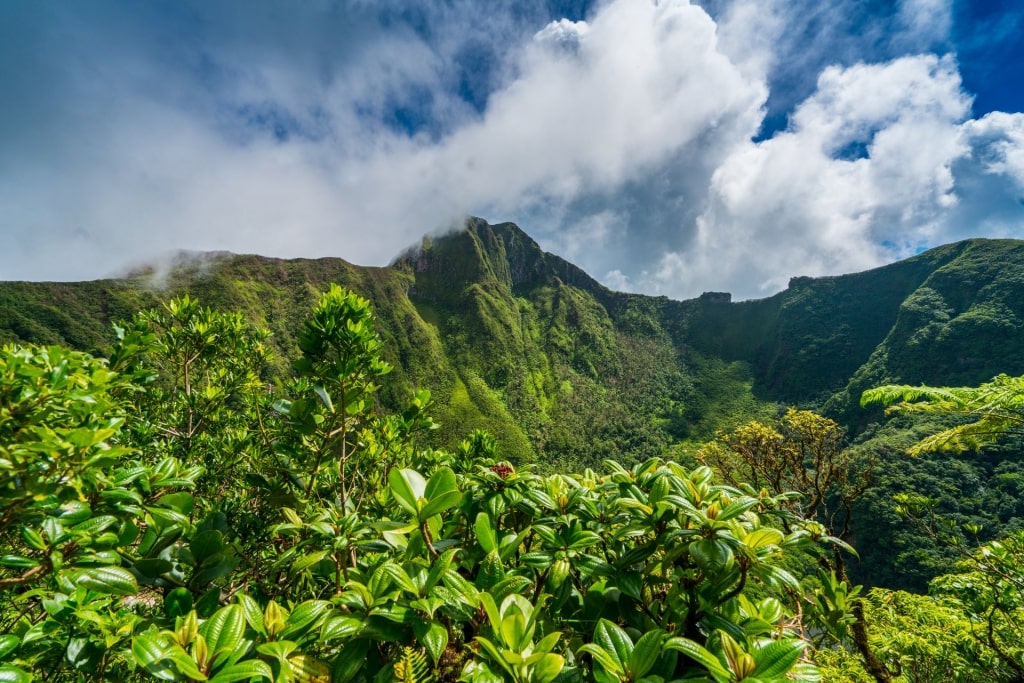
Mount Liamuiga
There’s hiking on sleepy St. Kitts, too, up the dormant volcano, Mount Liamuiga. Embark on a two-and-a-half hour climb up through lush rainforest to 3,000 feet above sea level, where tropical blooms and tangled vines line the trail.
Local guides have incredible knowledge about the fauna and flora, not to mention eagle eyes when it comes to spotting popular Caribbean animals and birds; their sense of pride in their environment is inspiring.
Read: Where to Find the Best Hiking in the Caribbean
Colorful Markets
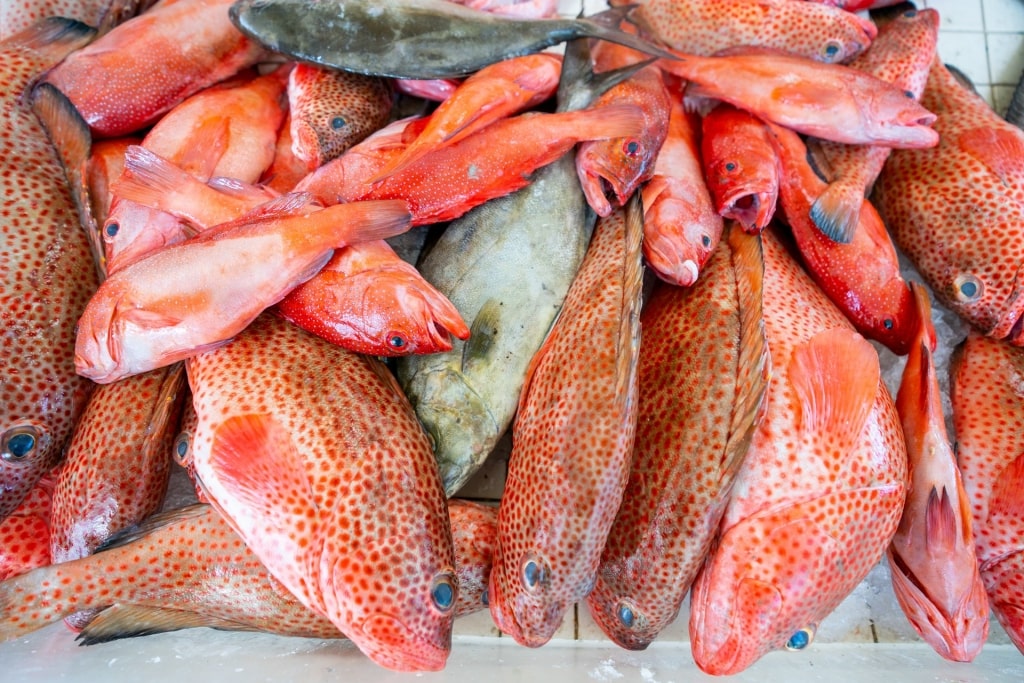
Fresh fish
Visiting a market is always a good way to get under the skin of a place. Throughout the Caribbean, produce markets are a place to socialize and gossip as well as shop, haggling over the goods all part of social interaction.
You’ll be dazzled by the abundance of tropical fruits and vegetables. Juicy pineapples, mangos and papayas, cherimoyas, coconuts, giant passionfruit, jackfruit, guava, soursop, and starfruit are piled high.
Fish, too; head for Potter’s Cay in Nassau, Bahamas, for fresh-off-the-boat conch fritters and steamed lobster from the street food stalls. In Trinidad, Chaguanas market is the Caribbean in microcosm, with sections for fruit, spices, live poultry, fish, and grazing on spicy snacks.
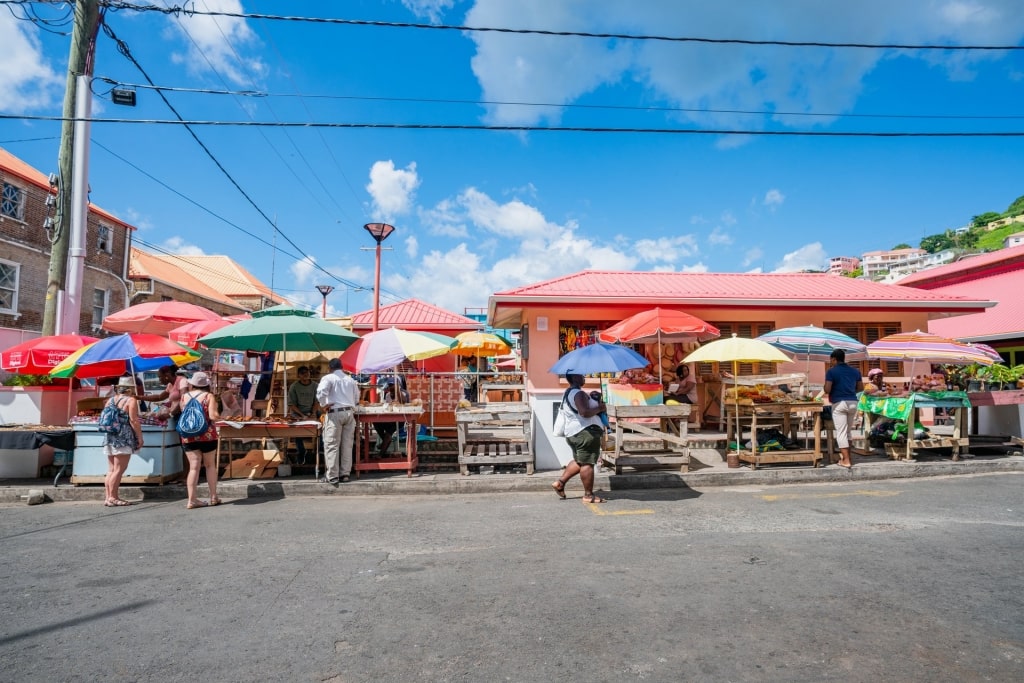
Market Square, Grenada
In St. George, Grenada, you’ll soon realize why you’re on what’s known as the “Spice Island”. Stroll around Market Square, breathing in fragrant wafts of vanilla, nutmeg, cinnamon, and cloves. On St. Martin, meanwhile, head to Marigot Market on the French side of the island for crafts, jewelry, herbs, spices, and rum in one bustling location.
Read: Best Things to Do in Grenada
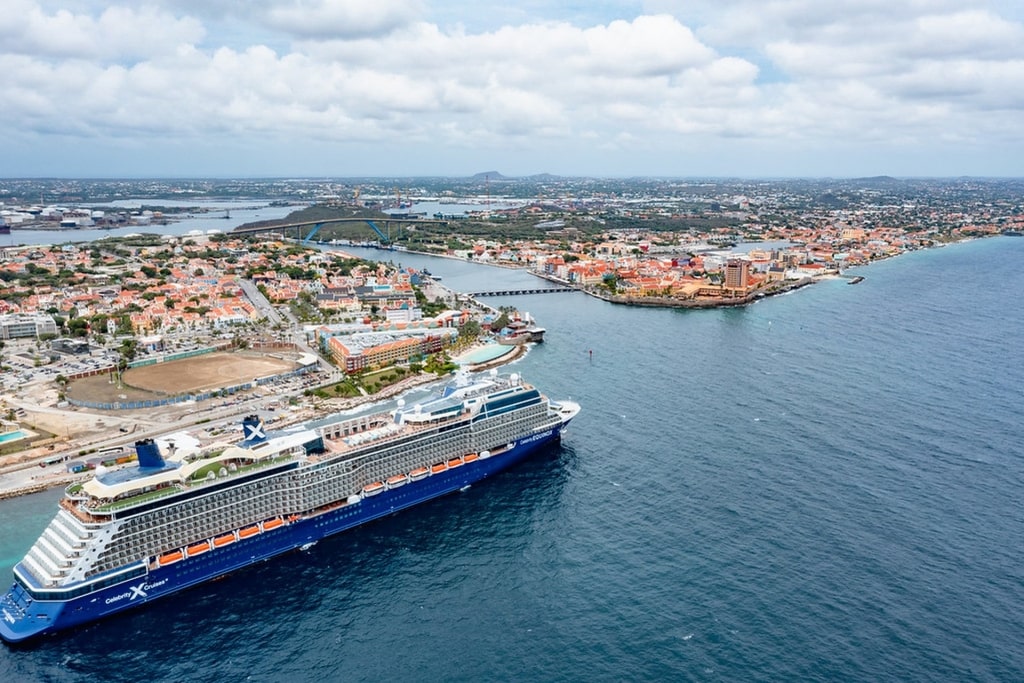
Celebrity Equinox
Tempted to delve deeper into Caribbean culture? Browse our cruises to the Caribbean and plan your next tropical adventure.
